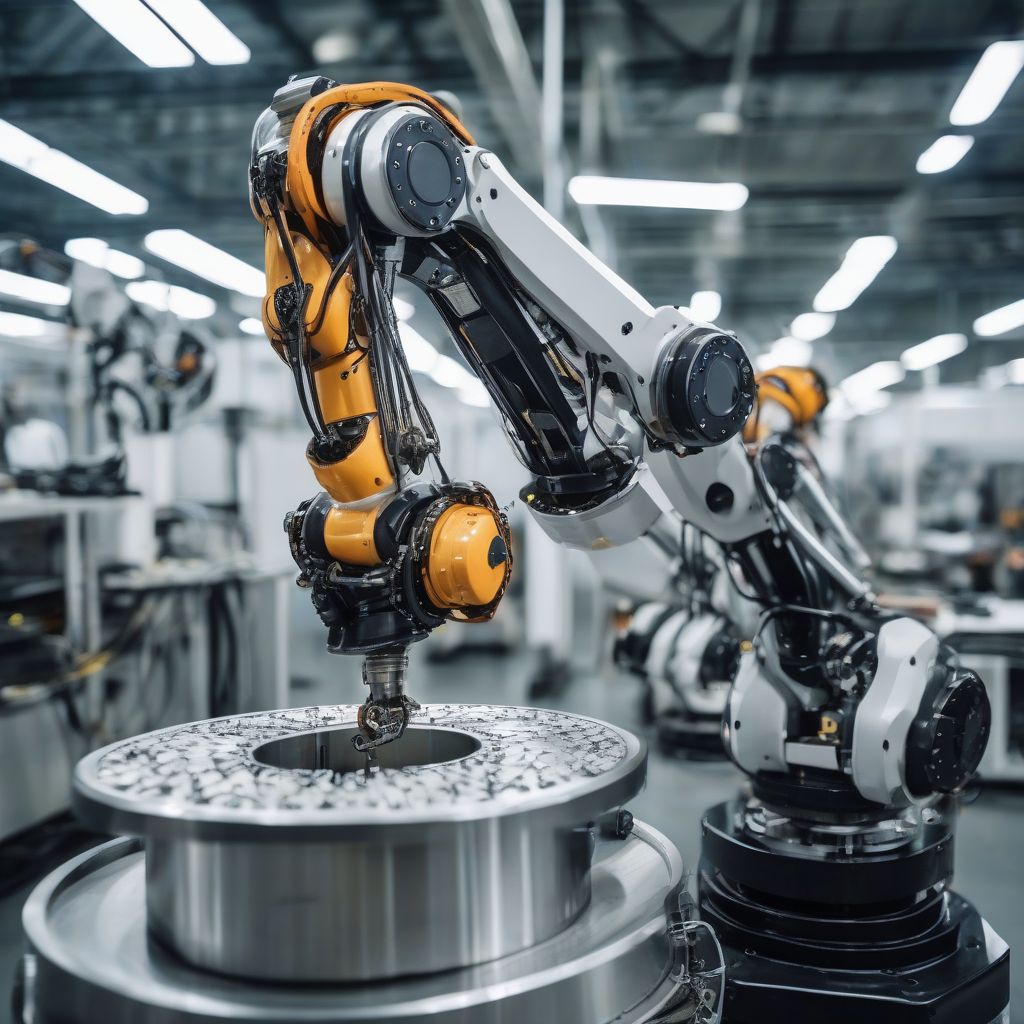Remember the Jetsons and their futuristic home, complete with a robotic maid? While we might not have flying cars (yet!), the reality of advanced robotic automation is closer than you think. It’s no longer a scene from a sci-fi movie; it’s reshaping industries before our very eyes and impacting our daily routines in ways we might not even realize.
Beyond the Buzzword: Understanding Robotic Automation
The term “robotic automation” might evoke images of clunky metal arms working tirelessly on a factory floor, and while that’s a piece of the puzzle, it barely scratches the surface. We’re talking about sophisticated systems that combine:
- Robotics: The physical robots themselves, designed for specific tasks.
- Artificial Intelligence (AI): Enabling robots to learn, adapt, and make decisions.
- Software and Sensors: Providing the “brains” for navigation, data processing, and interaction.
This powerful synergy allows robotic automation systems to perform a vast range of activities, from the highly complex to the seemingly mundane, often with greater speed, accuracy, and efficiency than humans.
Innovations Driving the Revolution
What’s truly exciting is the rapid pace of innovation in this field. Here are some key advancements pushing the boundaries of what’s possible:
1. Advanced Vision Systems
Imagine a robot that can “see” as well as a human, recognizing objects, navigating complex environments, and even inspecting products for minuscule defects. This is the power of advanced vision systems, utilizing 3D cameras, sophisticated algorithms, and machine learning. These systems are crucial for robots working alongside humans, ensuring safety and precision.
2. Collaborative Robots (Cobots)
Gone are the days of robots confined to cages. Cobots are designed to work collaboratively with human operators, enhancing their capabilities rather than replacing them. Equipped with advanced safety features, they can handle repetitive or physically demanding tasks, freeing up human workers for more specialized roles.
3. AI-Powered Decision Making
Robots are becoming increasingly intelligent, thanks to advancements in AI. Machine learning algorithms allow them to analyze data, learn from experience, and make informed decisions. This opens up opportunities for robots to tackle more complex tasks that require adaptability and problem-solving, such as dynamic picking and packing in warehouses or personalized product recommendations in retail.
4. The Rise of Autonomous Systems
We’re witnessing a surge in the development of autonomous systems – robots that can operate independently with minimal human intervention. Self-driving cars, drones for delivery, and autonomous cleaning robots are just a few examples of how this technology is revolutionizing various sectors.
 Robotic Arm in Manufacturing Plant
Robotic Arm in Manufacturing Plant
Impact Across Industries: From Manufacturing to Healthcare
The transformative potential of robotic automation spans across numerous industries:
-
Manufacturing: Robots have long been staples in manufacturing, but the latest innovations are taking efficiency to new levels. Imagine self-optimizing production lines, predictive maintenance reducing downtime, and robots handling intricate assembly tasks with human-like dexterity.
-
Logistics and Warehousing: The rise of e-commerce has fueled the demand for efficient logistics. Robots are now streamlining warehouse operations, from autonomous picking and packing to optimized route planning for delivery robots.
-
Healthcare: Robotic automation is transforming healthcare in remarkable ways. Surgical robots assist surgeons with increased precision and minimally invasive procedures, while rehabilitation robots aid patients in regaining mobility.
-
Agriculture: As the global population grows, so does the demand for food production. Autonomous tractors, drones for crop monitoring, and robotic harvesters are boosting efficiency and sustainability in agriculture.
-
Food Service: Yes, even restaurants are embracing robotic automation! From robotic chefs preparing meals to delivery robots bringing food to your doorstep, the industry is finding innovative ways to streamline operations and enhance customer experiences.
The Human Element: Addressing Concerns and Opportunities
It’s natural to wonder about the impact of robotic automation on jobs. While some roles may be automated, history has shown that technological advancements also create new opportunities. The key lies in adaptation and upskilling.
The future workforce will need to embrace collaboration with robots, focusing on tasks that require uniquely human skills:
- Creativity and Innovation: Designing, developing, and improving these advanced systems.
- Critical Thinking and Problem Solving: Managing and maintaining robots, addressing complex issues, and ensuring seamless integration.
- Emotional Intelligence and Communication: Roles requiring empathy, interpersonal skills, and human interaction will remain crucial.
A Glimpse into the Future: What’s Next?
The field of robotic automation is constantly evolving. As AI, machine learning, and robotics continue to advance, we can expect even more sophisticated and integrated systems. Imagine:
- Personalized Robotics: Customized robots tailored to specific individual needs, from assistive robots for the elderly to personalized learning companions for children.
- Smart Homes and Cities: Homes and cities becoming more automated and interconnected, with robots seamlessly integrated into our daily routines.
- Space Exploration and Beyond: Robots playing an even more significant role in exploring the universe, from conducting research on Mars to assisting with the construction of future space habitats.
The future of robotic automation is brimming with possibilities. By embracing these advancements, fostering collaboration between humans and robots, and preparing the workforce for the jobs of tomorrow, we can harness the power of this technology to create a more efficient, sustainable, and interconnected world.
[amazon bestseller=”robotics”]
Embracing the Robotic Revolution
From improving efficiency and productivity to solving complex challenges across industries, the innovations in robotic automation are transforming our world. As we move toward a future where robots and humans work side-by-side, it’s crucial to embrace the opportunities for collaboration, adaptability, and continuous learning. The future is automated, and it’s closer than you think.
